How to Target Specific Fish Species from Shoreline Fishing
Shoreline fishing offers an accessible way to connect with nature and enjoy the thrill of the catch without needing a boat. However, randomly casting your line and hoping for the best rarely yields consistent results. Successful anglers understand that different fish species have unique behaviors, habitat preferences, and feeding patterns. By tailoring your approach based on your target species, you can dramatically improve your success rate and make each fishing trip more productive.
This comprehensive guide will walk you through the essential techniques, gear selections, and environmental considerations needed to target specific fish species from the shore, helping both beginners and experienced anglers enhance their fishing experience.
Understanding Fish Behavior and Habitat
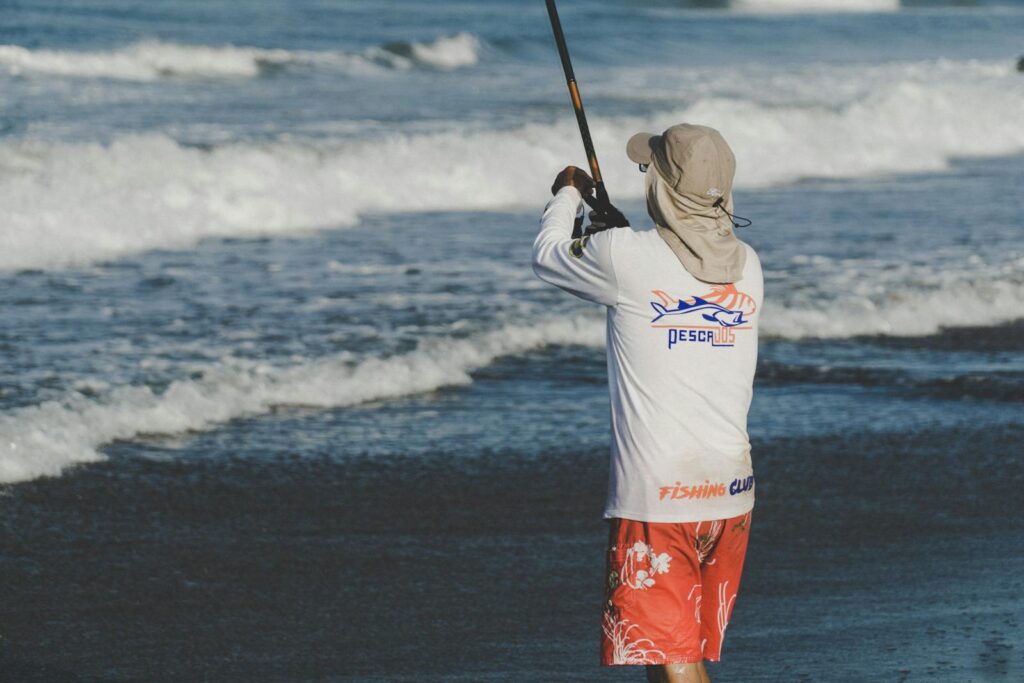
Before attempting to target specific fish species, it’s essential to understand their natural behaviors and preferred habitats. Fish typically congregate in areas that provide food, shelter, and suitable water conditions for their species. Predatory fish like bass often lurk near structure such as fallen trees, rocks, or weed beds where they can ambush prey.
Bottom-feeders like catfish tend to stay in deeper channels or holes, particularly in rivers and lakes with varying depths. Knowing that many species are most active during dawn and dusk periods (known as “golden hours”) can significantly increase your chances of success. Research your target species thoroughly, including seasonal patterns and how weather conditions affect their activity levels.
Essential Gear for Species-Specific Fishing

Selecting the right equipment for your target species is crucial for shoreline fishing success. Rod power and action should match the size and fighting style of your target fish—light to medium rods for smaller species like crappie and perch, while heavier rods suit larger species such as pike or sturgeon. Reel selection is equally important, with spinning reels generally preferred for lighter presentations and baitcasting reels for heavier lures and stronger fish.
Line choice varies significantly by species, with monofilament offering versatility, fluorocarbon providing invisibility in clear water, and braided line delivering strength for heavy cover fishing. Ensure your tackle box contains an assortment of hooks in various sizes appropriate for your target species, as hook size can dramatically affect your hook-up rate.
Targeting Bass from the Shore
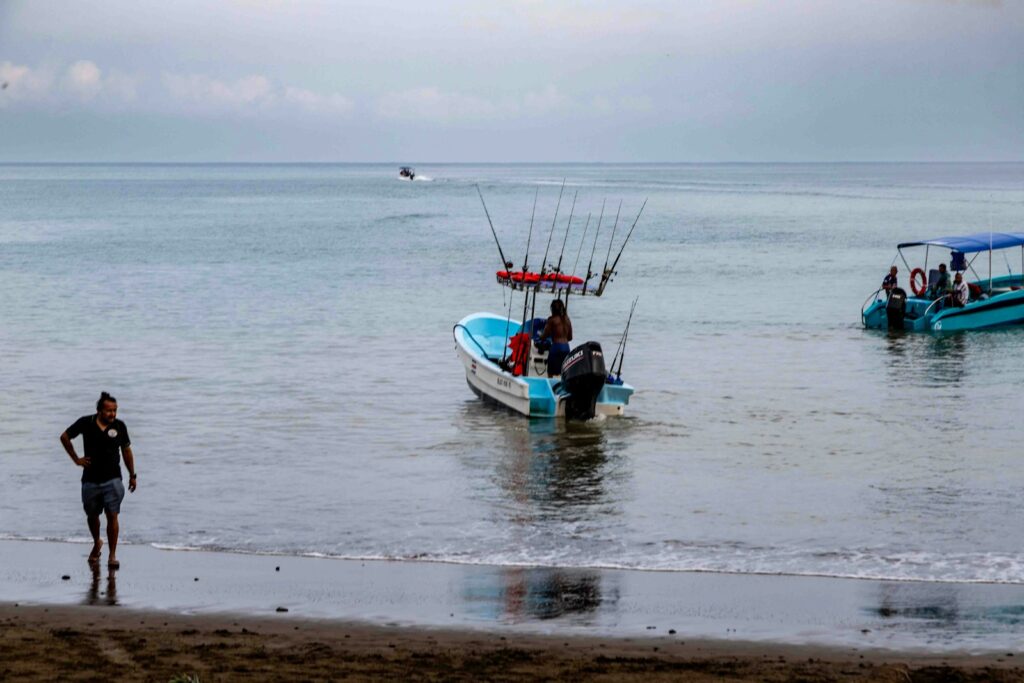
Bass fishing from the shoreline requires an understanding of these popular gamefish’s territorial nature and feeding patterns. Focus on visible structure like docks, submerged logs, rock piles, and weed edges where bass ambush prey. Plastic worms rigged Texas-style are particularly effective as they can be worked slowly through cover without snagging. During warmer months, topwater lures like poppers and frogs can produce explosive strikes, especially in early morning or evening hours.
When bass are less active, downsize your presentation and slow your retrieve—small jigs or drop shot rigs fished methodically often outperform faster presentations. Remember that bass typically move shallower during spring spawning periods and retreat to deeper adjacent areas during hot summer days or cold winter periods.
Trout Fishing Techniques for Shore Anglers
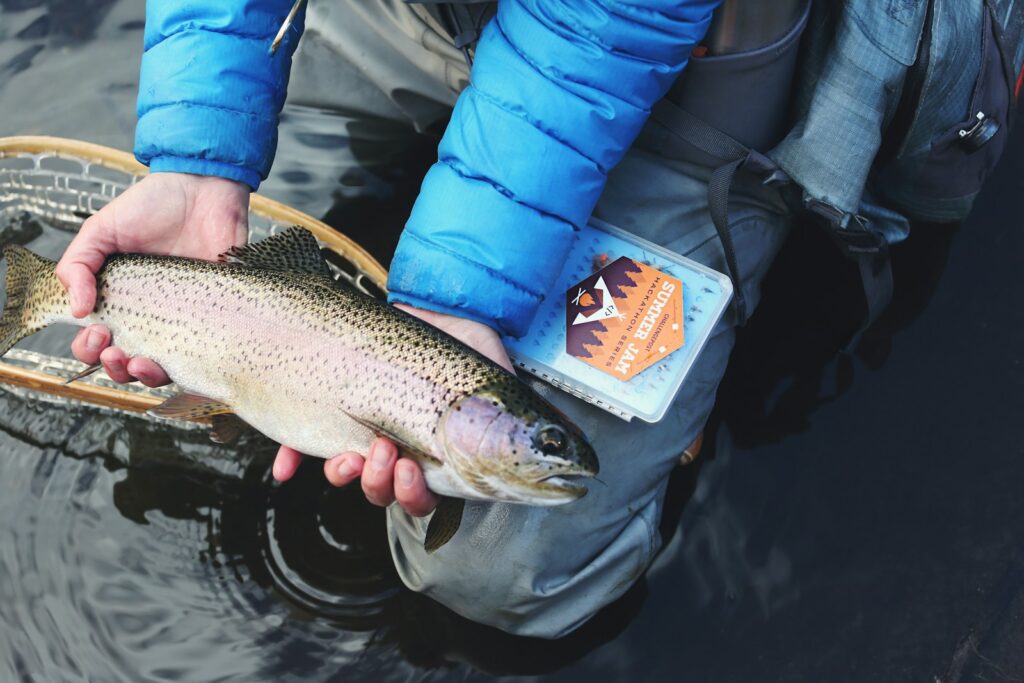
Trout are highly sensitive to water temperature, oxygen levels, and light conditions, making them somewhat predictable for knowledgeable shore anglers. For stream and river fishing, focus on pools below rapids where trout rest and feed on insects carried by currents. Light tackle is essential—6-8 pound test line and small hooks prevent spooking these wary fish in clear water conditions.
Natural baits like worms, salmon eggs, or mealworms work consistently, while artificial options like small spinners, spoons, and flies match their feeding preferences for insects and smaller fish. Early season trout fishing often produces better results with bait near the bottom, while summer evenings can be ideal for dry fly or topwater presentations as trout feed on insects at the surface.
Catfish: The Night Shore Fishing Champion

Catfish offer shore anglers excellent opportunities, particularly during evening and night hours when they become most active. Their remarkable sense of smell makes highly aromatic baits essential—chicken livers, cut bait, prepared stink baits, and night crawlers are all proven catfish attractors. Focus on deeper holes in rivers, channels in lakes, and areas with slower currents where catfish conserve energy while waiting for food to come their way.
Sturdy tackle is necessary even for smaller catfish species, as their powerful runs and tendency to wrap around underwater structures can test your equipment. A simple slip-sinker rig allowing the fish to take the bait without feeling resistance often yields the best results, especially when fishing murky water or at night.
Panfish: Perfect Targets for Beginning Shore Anglers
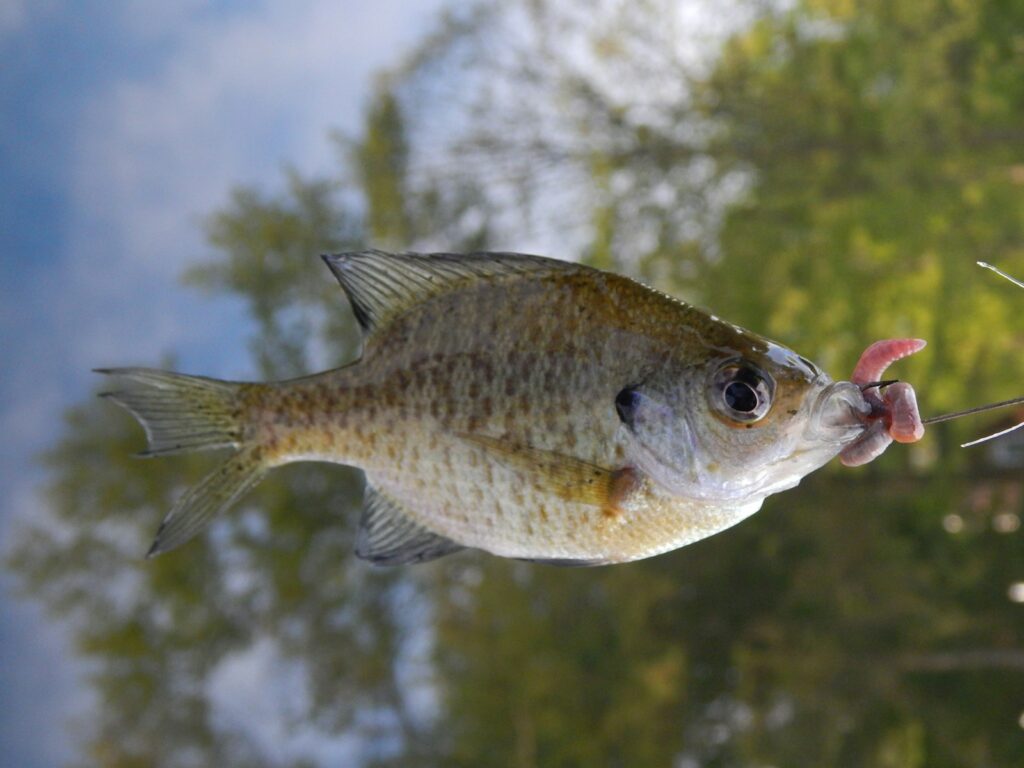
Panfish species like bluegill, crappie, and perch make excellent targets for shore anglers due to their abundance and willingness to bite. These species typically school in predictable locations—around docks, near aquatic vegetation, alongside fallen trees, or over sandy bottoms in moderate depths. Ultra-light tackle maximizes the fun factor when catching these smaller fish, with 2-6 pound test line and small hooks appropriate for their modest mouth size.
Simple baits like worms, crickets, and small minnows are consistently effective, while tiny jigs, small spinners, and micro-crankbaits can trigger reaction strikes when fish are active. During spawning periods in spring and early summer, target shallow areas where these fish create visible nests and become particularly aggressive in defending their territory.
Pike and Muskie: Shoreline Predators
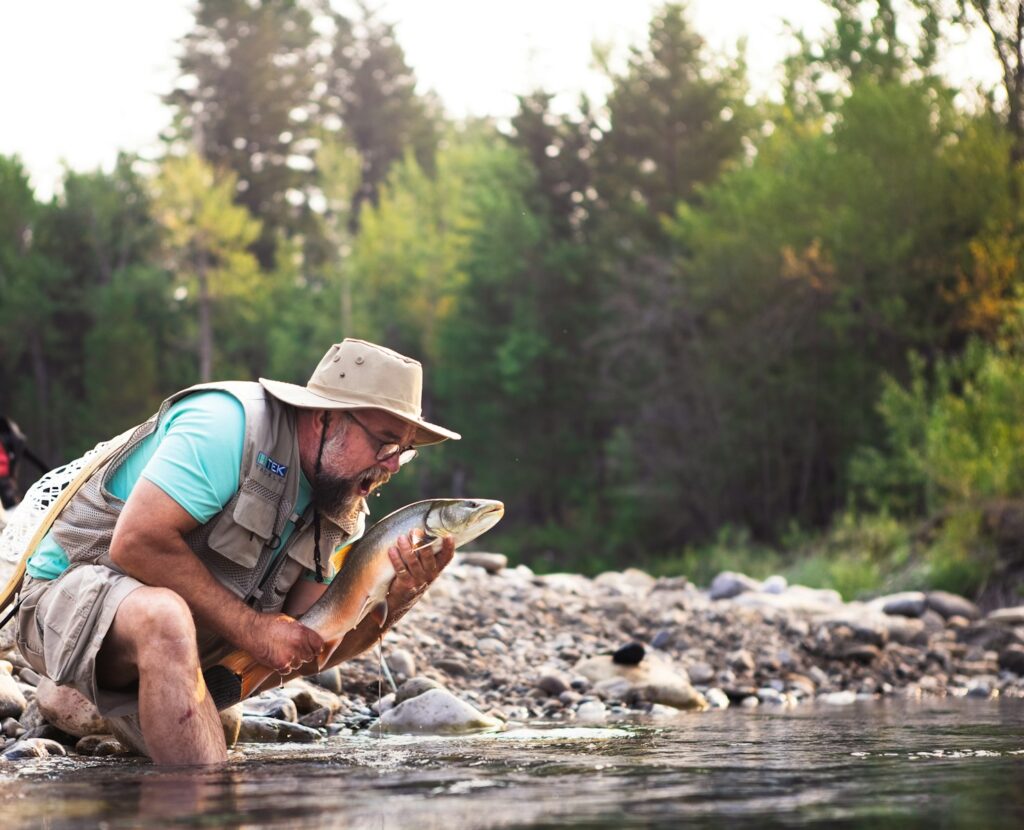
Northern pike and muskie offer shore anglers the opportunity to catch trophy-sized predators without a boat. These ambush predators favor areas with submerged vegetation, points, and drop-offs where they can lurk and attack passing prey. Heavy tackle is essential—medium-heavy to heavy rods, 20-40 pound test line, and wire leaders to prevent bite-offs from their razor-sharp teeth.
Large spoons, inline spinners, and jointed swimbaits that imitate wounded baitfish trigger the predatory instinct of these species. Cast parallel to weed edges rather than directly into thick cover to keep your lure in the strike zone longer while reducing snags. Remember that pike and muskie activity peaks during cooler weather periods—early spring, late fall, and overcast summer days often produce the best action.
Carp: The Underrated Shore Fishing Challenge
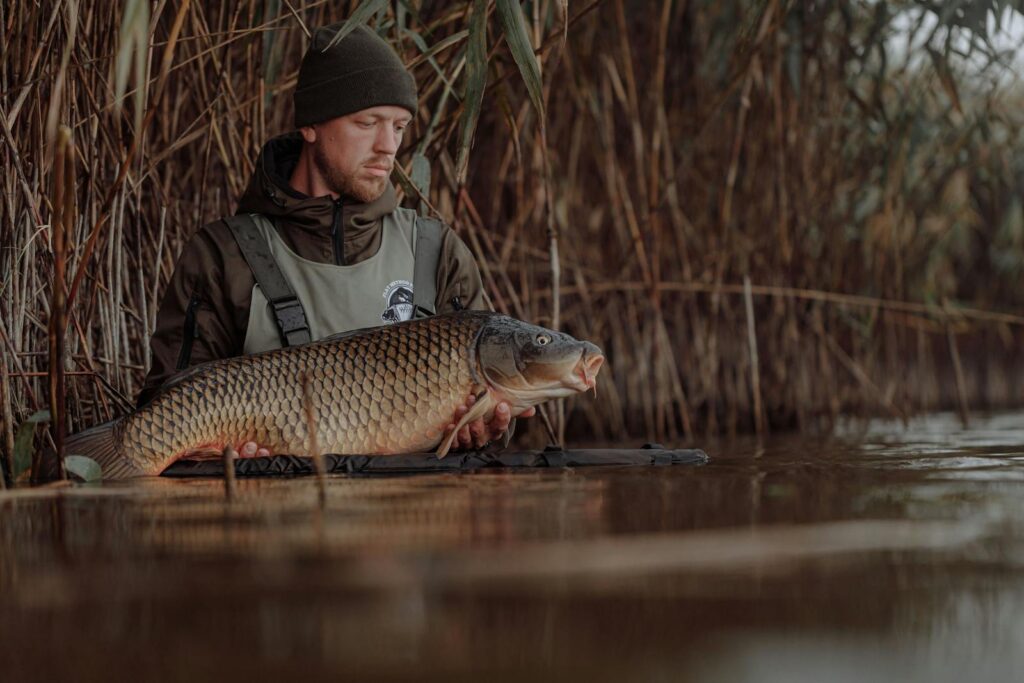
Carp fishing from shore offers anglers the chance to battle powerful, hard-fighting fish that often exceed 20 pounds. These cautious feeders require specialized approaches—particularly hair rigs that present baits like corn, boilies, or dough balls in a natural, suspicious-free manner.
Medium to heavy rods with smooth, reliable drag systems help manage the powerful runs these fish make when hooked. Look for carp in shallow, warm bays in spring where they spawn and feed, or near inflowing streams and rivers where food sources are abundant. Patience is crucial when targeting carp, as pre-baiting an area for several days before fishing can condition them to feed confidently in your chosen spot, significantly increasing your chances of success.
Seasonal Patterns in Shore Fishing

Understanding how seasons affect fish behavior is critical for consistently successful shore fishing. Spring typically brings fish into shallower waters for spawning activities, making them more accessible to shore anglers targeting areas that warm up first—such as shallow bays with dark bottoms or sun-exposed shorelines. Summer often pushes fish deeper or into shaded areas during bright days, making early morning, evening, or night fishing more productive from shore.
Fall triggers feeding frenzies as fish prepare for winter, with many species following baitfish migrations and becoming more aggressive. Winter shore fishing requires targeting deeper, slower areas adjacent to shore where fish congregate in more stable water temperatures, often employing slower presentations with less movement to entice lethargic fish.
Reading Water for Shore Fishing Success
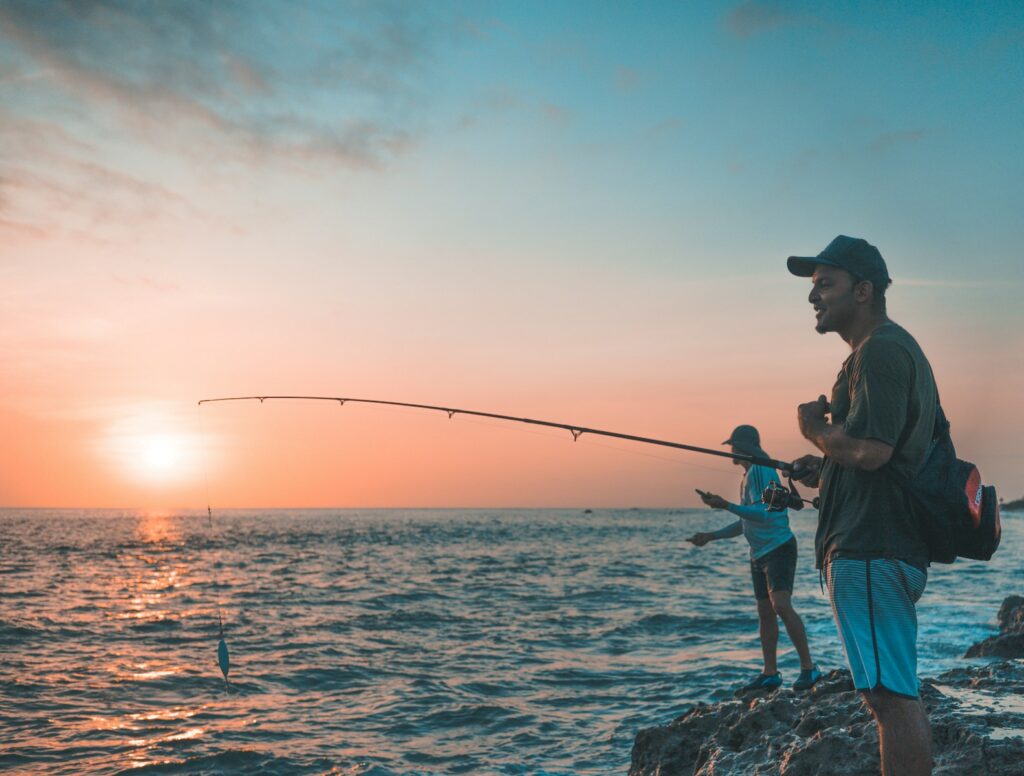
The ability to “read” water conditions dramatically improves species-specific targeting success. Look for seams where currents meet in rivers, creating natural feeding lanes where predatory fish wait for food to come to them. Points extending into deeper water create natural ambush positions for predatory species and should be thoroughly fished from multiple angles.
Submerged humps or depressions can be identified by surface current changes and often hold fish congregating around these structure variations. Water clarity also provides valuable information—clearer water typically requires more stealth, lighter line, and more natural presentations, while murky water allows heavier tackle and brighter, more visible lures that fish can locate through vibration and color contrast.
Weather Effects on Target Species
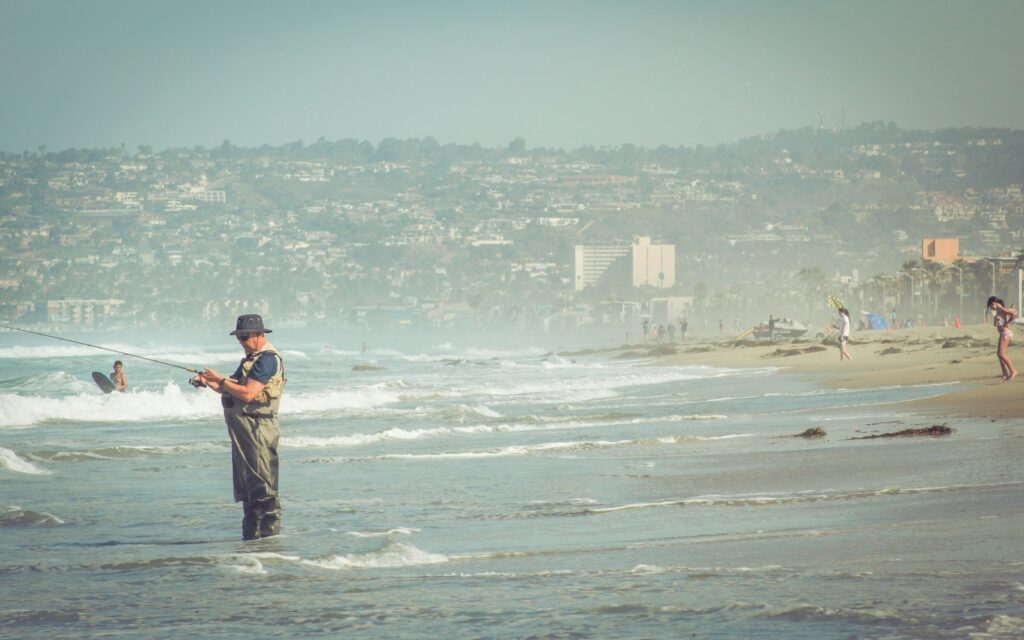
Weather conditions significantly influence fish behavior and can make the difference between success and failure when targeting specific species. Barometric pressure changes particularly affect fish feeding activity—falling pressure before storms often triggers aggressive feeding, while high, stable pressure following weather systems typically suppresses activity. Wind direction and strength create advantages for shore anglers by pushing plankton, insects, and baitfish toward windward shores, attracting larger predatory fish to these food-rich areas.
Water temperature fluctuations caused by weather patterns trigger movement patterns in most species, with even slight temperature increases in spring or decreases in fall potentially sparking feeding frenzies. Cloud cover affects light penetration and can make normally cautious species more willing to venture into shallower water during daylight hours, creating prime opportunities for shore anglers.
Specialized Shoreline Fishing Techniques

Several specialized techniques can significantly improve your species-specific targeting from shore. Float fishing (using bobbers or strike indicators) allows precise depth control and keeps bait suspended above weeds or snags while providing visible strike detection. Bottom fishing with sinker rigs works effectively for species that feed on the lake or river bed, such as catfish, carp, and certain trout.
Sight fishing—visually locating and casting directly to visible fish—becomes possible during spawning periods or in very clear water conditions, particularly effective for bedding bass or cruising carp. The walk-and-cast approach involves moving along shorelines, making a few casts in each promising spot rather than camping in one location, often more productive for covering water and locating active fish rather than waiting for inactive fish to become hungry.
Ethics and Conservation in Species Targeting

Responsible species targeting includes understanding and following conservation principles that ensure sustainable fishing for future generations. Always check local regulations regarding size limits, bag limits, and seasonal restrictions for your target species, as these rules are designed to protect spawning periods and maintain healthy populations. Practice proper catch-and-release techniques when not keeping fish, including wetting hands before handling, minimizing air exposure, and using barbless hooks when possible to reduce injury.
Consider using circle hooks when bait fishing, as they typically hook fish in the corner of the mouth rather than being swallowed, significantly increasing survival rates for released fish. Participate in conservation efforts by reporting tagged fish, unusual observations, or potential environmental concerns to local wildlife authorities.
Advanced Shore Fishing Strategies
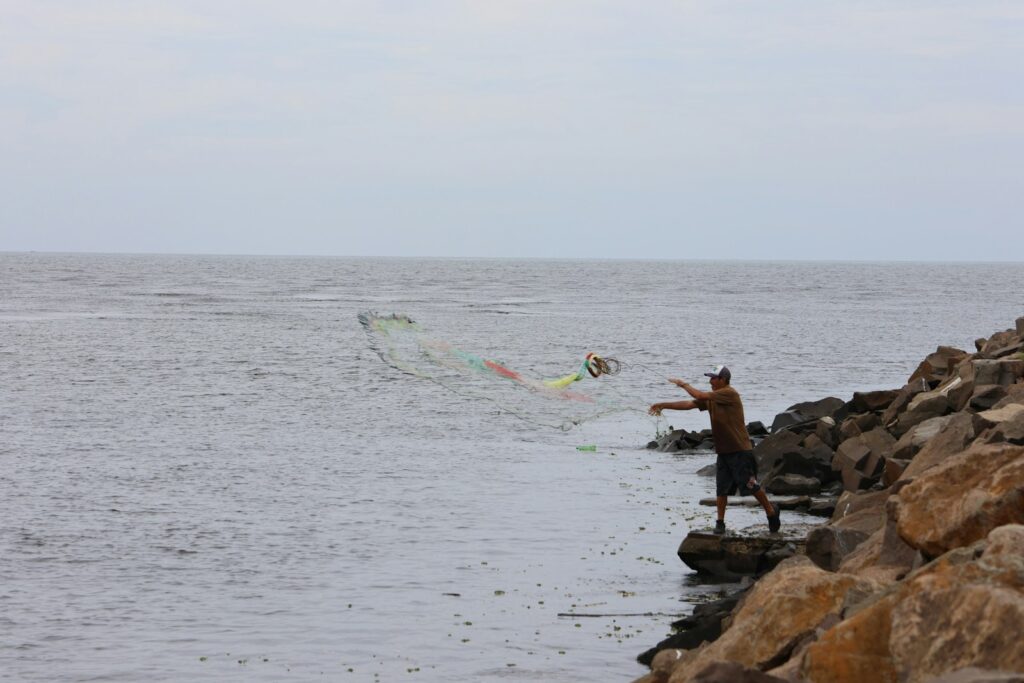
As you develop species-specific targeting skills, several advanced strategies can further improve your success rates. Keep detailed fishing logs recording conditions, locations, and results to identify patterns over time that may not be immediately obvious during individual trips. Develop versatility by mastering multiple presentation styles for your target species, allowing adaptation to changing conditions rather than relying on a single approach.
Consider using technology like fish finders that can be cast from shore to identify structure, depth changes, and even fish locations beyond visible range. Network with other shoreline anglers through local clubs or online communities to share knowledge (while respecting secret spots), as collective experience often reveals seasonal patterns and effective techniques faster than individual trial and error.
Conclusion

Targeting specific fish species from shore requires understanding fish behavior, selecting appropriate gear, and adapting to seasonal and environmental conditions. The shore angler who studies their quarry and approaches each fishing trip with species-specific strategies will consistently outperform those relying on luck alone.
Remember that shoreline fishing success comes from a combination of knowledge, preparation, and persistence. Even experienced anglers continuously learn and refine their techniques through observation and adaptation. By applying the principles outlined in this guide, you’ll not only increase your catch rate but also gain a deeper appreciation for the ecosystems and behaviors of the fish species you pursue.

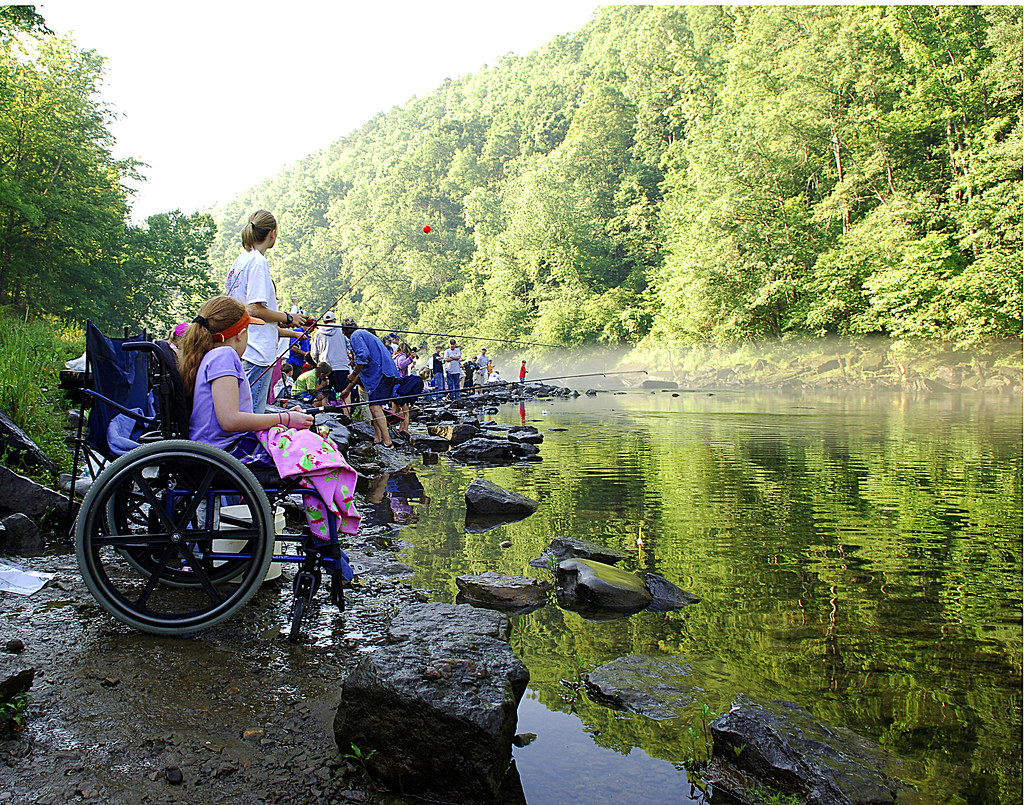
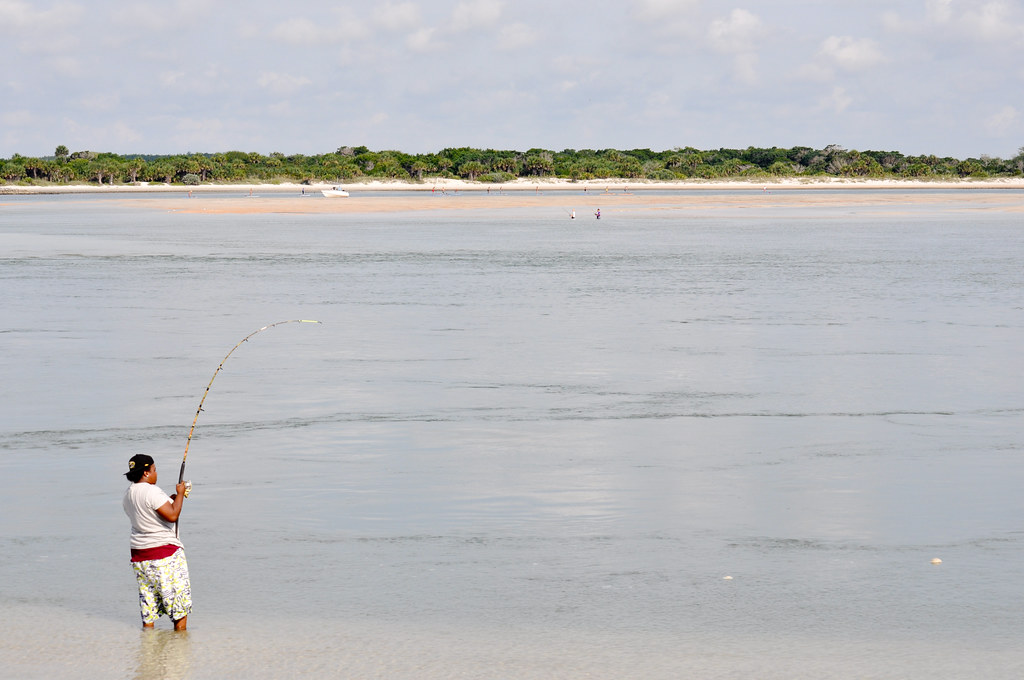











Post Comment